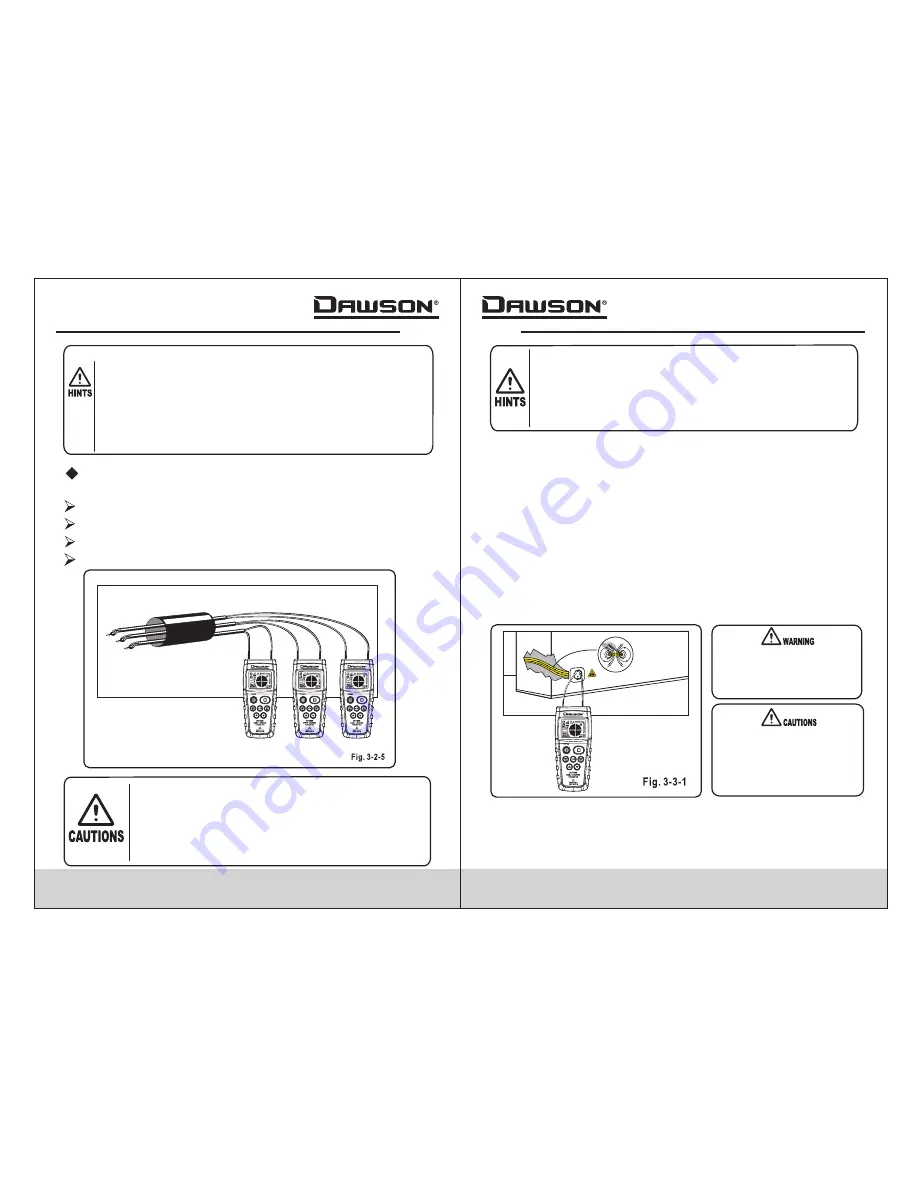
31
32
1. In this application, the humidity or material of the wall in
comparison to the depth of the line is insignificant.
2. When using the receiver, the stronger the signal received,
the closer the transmitter is to the cable.
3. Adjust the transmitter power to get an adequate signal
depending on the detection environment.
4. You can put the receiver into manual mode and adjust its
sensitivity to pick up the signal from the transmitter
adequately.
3.2.5 Classifying bundled circuits
CANNOT be live circuits.
Twist ends of core wires together.
Connect transmitter as shown in fig. 3-2-5
Follow the measurement example in the figure.
Preconditions:
1. If the cable is powered, turn off power first before
connecting transmitter.
2. The ends of core wires must be connected together and
conduct with each other.
3. If only one transmitter is available, perform multiple
measurements by switching between core wires.
1. When switching the connection between core wires, switch
codes to better distinguish between them.
2. Adjust the transmitter power to get an adequate signal
depending on the detection environment.
3. Add on additional transmitters to use different signal codes
simultaneously.
3.3 Increasing the effective detecting radius in
charged circuits
When connecting the transmitter to a live socket using
the live and neutral lines, the signals are sent on parallel
lines, so the twisting of circuits can cause the two signal
to counteract each other, leading to the effective detection
radius being less than 0.5m. In order to reduce this effect,
connect the
side of the transmitter as shown in
figure 3-3-2, where the neutral line is connected to a
separate cable to increase that effective detection radius
to as much as 2.5m when connected as shown in the figure.
positive
Please observe standard
safety precautions when
connecting the transmitter
to a charged circuit.
Keep in mind the distance
between the transmitter and
circuit to be detected in
order to get a clear signal
on the receiver.





































